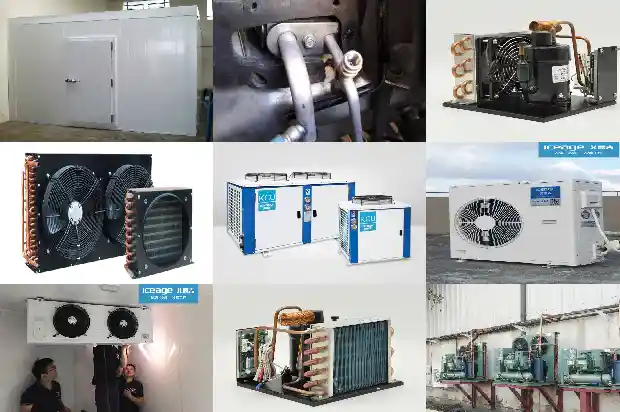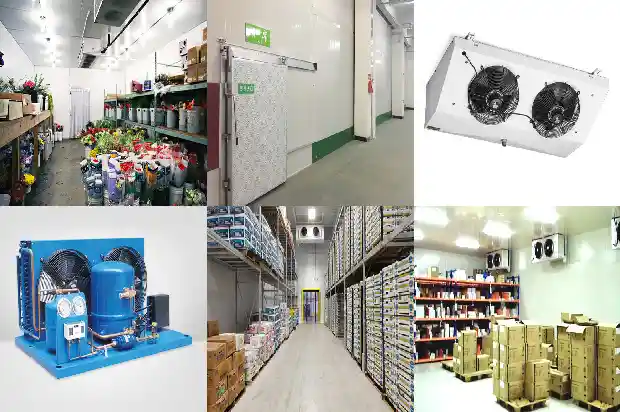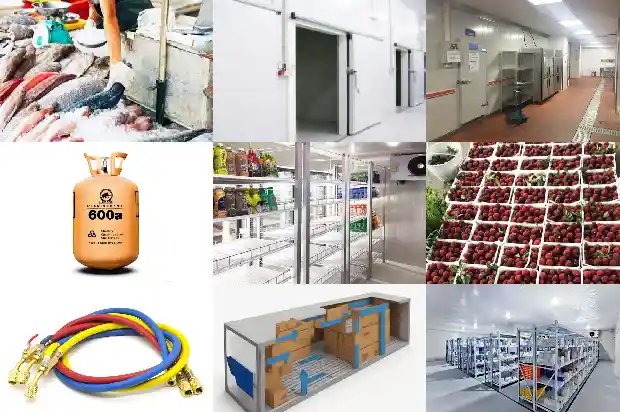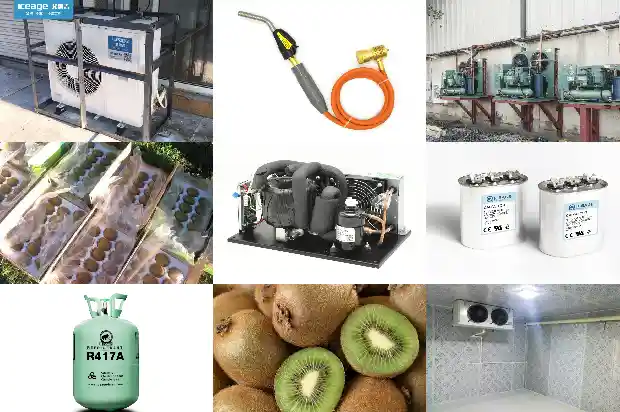What Factors Affect the Abnormal Operation of the Control Valve in the Cold Storage?
2025-03-05
- Blockage
The common problem of the control valve in the cold storage is blockage, which often occurs in the newly commissioned system and the initial stage of operation after major maintenance. Due to the blockage of welding slag, rust, etc. in the pipeline at the throttling port and the guiding part, the medium flow is not smooth. Or during the maintenance of the control valve, the packing is too tight, resulting in an increase in friction, leading to the phenomenon that the valve does not act with a small signal and overacts with a large signal.
Treatment method: Quickly open and close the bypass line or the control valve to let the dirt be washed away by the medium through the bypass line or the ball valve. Another method is to clamp the valve stem with a pipe wrench. Under the condition of an external signal pressure, turn the valve stem back and forth with force to make the valve core pass the blocked position. If it doesn't work, increase the air source pressure to increase the driving power and move it up and down repeatedly for several times, and the problem can be solved. If it still doesn't act, it is necessary to disassemble and deal with it. - Leakage
For the leakage of the control valve, the length of the valve stem is inappropriate. For the air-open valve, if the valve stem is too long, the upward (or downward) distance of the valve stem is insufficient, resulting in a gap between the valve core and the butterfly valve seat, which cannot be in full contact, leading to the valve not being able to close tightly and causing leakage. Similarly, for the air-close valve, if the valve stem is too short, there is a gap between the valve core and the valve seat, which cannot be in full contact, resulting in the valve not being able to close tightly and causing leakage.
Treatment method: The valve stem of the control valve should be shortened (or extended) to make the length of the control valve appropriate, so that it no longer leaks. - Oscillation
The insufficient spring stiffness of the control valve, and the unstable and sharply changing output signal of the control valve are likely to cause the oscillation of the control valve. It is also said that when the frequency of the selected valve is the same as the system frequency, or the pipeline and the base vibrate violently, the control valve will vibrate accordingly. Improper selection of the valve, when the control valve works at a small opening degree, there are drastic changes in flow resistance, flow velocity and pressure. When it exceeds the valve stiffness, the stability deteriorates, and oscillation occurs seriously.
Solution: Since the reasons for the occurrence of oscillation are multi-faceted, specific problems should be analyzed specifically. For slight vibrations, the stiffness can be increased to eliminate them. For example, select a spring with high stiffness and change to a piston actuator structure. If the pipeline and the base vibrate violently, eliminate the vibration interference by adding supports; if the frequency of the selected valve is the same as the system frequency, replace the valve with a different structure; if the oscillation is caused by working at a small opening degree, it is due to improper selection, and the flow capacity C value is selected too large. It is necessary to re-select a valve with a smaller flow capacity C value, or adopt split-range control or parent-child valves to overcome the situation where the control valve works at a small opening degree. - Faults of the Valve Positioner
Ordinary positioners work based on the principle of mechanical force balance, that is, the nozzle-flapper technology. The main types of faults are as follows:
- Because it works based on the principle of mechanical force balance, it has many movable parts and is easily affected by temperature and vibration, resulting in the fluctuation of the control valve;
- Using the nozzle-flapper technology, because the nozzle hole is very small, it is easily blocked by dust or unclean air source, making the positioner unable to work normally;
- Using the principle of force balance, the elastic coefficient of the spring changes under harsh field conditions, resulting in the nonlinearity of the control valve and the decline of control quality.
The intelligent positioner is composed of components such as a microprocessor (cpu), A/D, D/A converter, etc., and its working principle is completely different from that of an ordinary positioner.
The comparison between the given value and the actual value is purely an electrical signal, and it is no longer a force balance. Therefore, it can overcome the disadvantages of the force balance of the conventional positioner. However, when used in emergency shutdown situations, such as emergency shut-off valves, emergency vent valves, etc. These valves are required to stay stationary at a certain position, and the bottom valve only needs to act reliably when an emergency occurs. Staying at a certain position for a long time is likely to cause the electrical converter to lose control, resulting in the dangerous situation that the valve does not act with a small signal.
In addition, for the position sensing potentiometer used for the valve, due to working in the field, the resistance value is likely to change, resulting in the dangerous situation that the valve does not act with a small signal and is fully open with a large signal. Therefore, in order to ensure the reliability and availability of the intelligent positioner, they must be tested frequently.
(1) Generally, the installation of cold storage valves does not require a strength test, but the valve body and the valve cover after repair or the corroded and damaged valve body and valve cover should be subjected to a strength test. For the safety valve, its setting pressure, reseating pressure and other tests should comply with the regulations in its instruction manual and relevant procedures.
(2) Before the installation of the valve, a strength and tightness test should be carried out. 20% of the low-pressure valves should be randomly inspected. If they are unqualified, a full inspection should be carried out; medium and high-pressure valves should be fully inspected.
(3) During the test, the installation position of the valve should be in a direction that is easy to check.
(4) For valves with a welded connection form, when the blind plate pressure test is not feasible, a conical seal or an O-ring seal can be used for the pressure test.
(5) Try to remove the air in the valve during the hydraulic test.
(6) During the test, the pressure should be increased gradually, and it is not allowed to increase the pressure sharply and suddenly.
(7) The duration of the strength test and the tightness test is generally 2 to 3 minutes, and important and special valves should last for 5 minutes. The test time for small-diameter valves can be correspondingly shorter, and the test time for large-diameter valves can be correspondingly longer. During the test, if there are any doubts, the test time can be extended.
During the strength test, it is not allowed for the valve body and the valve cover to sweat or leak. For the tightness test, general valves are usually tested once, and important valves such as safety valves and pressure valves need to be tested twice. During the test, for low-pressure, large-diameter unimportant valves and valves that are allowed to leak according to the regulations, a small amount of leakage is allowed; since the requirements for valves used in power plants, chemical plants, metallurgical plants, temperature and pressure valves and other valves are different, the leakage requirements for solenoid valves should be implemented according to relevant regulations.
Related Articles
- What are the factors affecting large cold storages?
- Operation and Maintenance Process of Cooling Towers
- Analysis of the Composition, Control and Operation Process of Cold Storage System
- Reasons for Compressor Oil Deterioration and Oil - adding Operations
- Operation and Precautions of Frozen and Refrigerated Auxiliary Equipment
- Oil Cooling Methods and Oil - changing Operation Procedures for Screw Compressors
- Refrigeration System: Copper Pipe Welding and Flushing Operations
- Essential for Maintenance! Parameters and Phenomena of Normal Operation of Refrigeration and Heating Systems
- What is the Correct Operation Method of the Distribution Box during Cold Storage Installation?
- Operation of Screw - type Water - cooled Chiller Units
- Considerations in Selecting Packaged Air Conditioners and Their Heat Recovery Operations
- Common Malfunctions in the Operation of Cold Storage
- What Are the Three Essential Conditions for the Safe Operation of the Refrigeration System?
- Common Issues in Chiller Operation and Solutions
- Operations and Precautions for Multi - split Air Conditioners: Blowing Debris, Air Tightness, Vacuum Drying, and Refrigerant Charging
- What Should Be Done When the Condenser Fan Doesn't Rotate During Operation?
- Experience Sharing on Refrigeration Welding Operations
- Maintenance and Operation of Freezing and Cold Storage Warehouses
